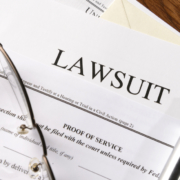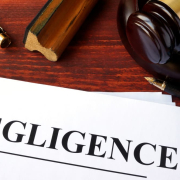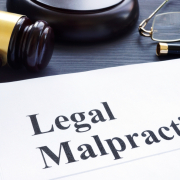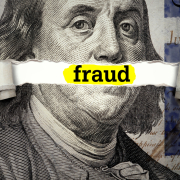Analysis: When Legal Malpractice Constitutes Fraud
Legal malpractice occurs when a lawyer fails to competently perform their legal duties, resulting in harm to their client. However, the line between legal malpractice and outright fraud can sometimes blur. This analysis explores when legal malpractice crosses into fraud, particularly in situations where state or federal law is explicit, case law is well-settled, and the outcome of a legal matter is predictable. The discussion focuses on whether giving a client false hope and charging a legal fee under these circumstances constitutes fraud.
Defining Legal Malpractice and Fraud
Legal Malpractice: Legal malpractice involves a lawyer’s negligence or breach of duty that causes harm to a client. Key elements include:
Duty: The lawyer owed a duty to the client.
Breach: The lawyer breached that duty by acting negligently or incompetently.
Causation: The breach caused harm to the client.
Damages: The client suffered a quantifiable loss.
Fraud: Fraud is a deliberate deception to secure unfair or unlawful gain. In the context of legal practice, it involves intentional misrepresentation or concealment of a material fact with the intent to deceive the client, leading to the client’s detriment.
The Predictability of Legal Outcomes
Legal outcomes can be highly predictable in cases where:
-Statutory Law: State or federal statutes are clear and leave little room for interpretation.
– Case Law: Precedent is well-established, and courts consistently follow it.
– Regulations: Administrative regulations are specific and apply uniformly.
In such scenarios, lawyers have a professional and ethical obligation to inform clients about the high predictability of outcomes. Misleading a client about the likely outcome to secure a fee can be grounds for fraud.
Elements of Fraud in Legal Practice
For a lawyer’s actions to constitute fraud, the following elements must typically be present:
- False Representation: The lawyer makes a false statement or fails to disclose important information.
- Knowledge of Falsity: The lawyer knows the statement is false or is reckless about its truth.
- Intent to Deceive: The lawyer intends for the client to rely on the false statement.
- Justifiable Reliance: The client reasonably relies on the false statement.
- Damages: The client suffers harm as a result of the reliance.
Case Analysis: When Legal Malpractice Becomes Fraud
Scenario 1: Clear Statutory Provisions
Example: A client consults a lawyer about filing a lawsuit barred by a statute of limitations. The law is explicit that the claim is time-barred. If the lawyer, aware of the clear statutory bar, encourages the client to pursue the lawsuit and charges a fee, this could constitute fraud.
– False Representation: The lawyer suggests the lawsuit is viable.
– Knowledge of Falsity: The lawyer knows the claim is time-barred.
– Intent to Deceive: The lawyer intends to earn a fee by misleading the client.
– Justifiable Reliance: The client relies on the lawyer’s expertise.
– Damages: The client wastes time and money on a futile lawsuit.
Scenario 2: Established Case Law
Example: A client seeks to appeal a case where the appellate courts have consistently ruled against similar appeals. If the lawyer assures the client of a high probability of success and charges a substantial fee, despite knowing the overwhelming precedent against such appeals, this can be fraudulent.
– False Representation: The lawyer assures an unlikely success.
– Knowledge of Falsity: The lawyer knows the precedents.
– Intent to Deceive: The lawyer seeks to gain financially from the client’s hope.
– Justifiable Reliance: The client depends on the lawyer’s guidance.
– Damages: The client incurs unnecessary legal fees.
Scenario 3: Regulatory Compliance
Example: A business client consults a lawyer about a compliance issue with federal regulations that are clear and unambiguous. If the lawyer advises a complex, unnecessary course of action, promising a better outcome and charging a high fee, knowing the regulations do not support such an action, it may be fraud.
– False Representation: The lawyer suggests an unnecessary, complex legal strategy.
– Knowledge of Falsity: The lawyer knows the regulations are straightforward.
– Intent to Deceive: The lawyer aims to profit from the client’s confusion.
– Justifiable Reliance: The client trusts the lawyer’s professional advice.
– Damages: The client spends money on unneeded legal services.
Ethical Considerations and Professional Conduct
The American Bar Association (ABA) Model Rules of Professional Conduct provide guidance on lawyers’ ethical duties, including:
– Competence (Rule 1.1): Lawyers must provide competent representation.
– Communication (Rule 1.4): Lawyers must keep clients informed and explain matters to the extent reasonably necessary for the client to make informed decisions.
– Fees (Rule 1.5): Lawyers must charge reasonable fees and avoid making agreements for, charging, or collecting unreasonable fees.
When a lawyer knowingly misleads a client about the likelihood of success in a legal matter where the outcome is highly predictable, it breaches these ethical rules. Such behavior not only constitutes malpractice but also crosses into the realm of fraud.
Legal Recourse for Clients
Clients who fall victim to fraudulent legal malpractice have several avenues for recourse:
– Legal Malpractice Claim: Clients can sue for negligence and breach of fiduciary duty.
– Fraud Claim: Clients can pursue a separate fraud claim, which may allow for punitive damages.
– Disciplinary Action: Clients can file a complaint with the state bar association, potentially leading to disciplinary action against the lawyer, including suspension or disbarment.
– Fee Dispute Resolution: Clients can seek fee arbitration or mediation to recover unreasonably charged fees.
Conclusion
Legal malpractice becomes fraud when a lawyer intentionally misleads a client about the outcome of a legal matter that is highly predictable due to clear statutory, case law, or regulatory provisions. In such cases, the lawyer’s actions meet the elements of fraud, including false representation, knowledge of falsity, intent to deceive, justifiable reliance, and resulting damages. Lawyers have a duty to provide honest, competent representation and to avoid exploiting clients’ trust for financial gain. Clients have various legal and ethical recourses to address such misconduct. Recognizing the distinction between malpractice and fraud is crucial for maintaining the integrity of the legal profession and protecting clients’ rights.
Legal Guidance
Contact the Civil Rights Law Firm of Figeroux & Associates. Once you make that choice, one of our attorneys will carefully evaluate your situation to determine whether or not you have a case. If it’s determined that you do have a case, we will guide you throughout the entire process to recover any money that you might be entitled to. The Civil Rights Law Firm of Figeroux & Associates will go after the maximum settlement for you. No Settlement – No Fee! The Lawyer you hire does make a difference! Call 855-768-8845 or visit www.askthelawyer.us to schedule an appointment.












Leave a Reply
Want to join the discussion?Feel free to contribute!